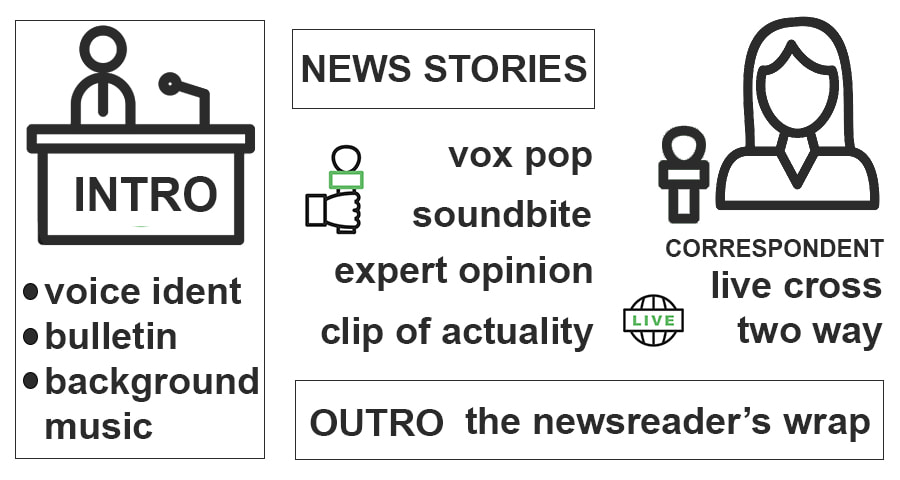Exclusive music news, big interviews, entertainment, social media trends and video from the news people at BBC Radio 1 and 1Xtra.
12:45 everyday
Newsbeat is the BBC‘s radio news programme broadcast on Radio 1, 1Xtra and Asian Network. Newsbeat is produced by BBC News but differs from the BBC’s other news programmes in its remit to provide news tailored for a specifically younger audience of teenagers and early twentysomethings
BBC Radio 1’s remit as a public service broadcaster meant it had to broadcast news. Newsbeat was launched on 10 September 1973 in response to the launch of a network of commercial radio stations across the UK which supplied a news service very different from the style of traditional BBC News.
Newsbeat is an example of a transitional media product which reflects changes in the contemporary media landscape. Newsbeat is both a traditional radio programme with regular, scheduled broadcast times, but it is also available online after broadcast.
The broadcast itself and the use of digital platforms provides opportunities for audience interaction. Newsbeat also exemplifies the challenges facing the BBC as a public service broadcaster that needs to appeal to a youth audience within a competitive media landscape.
The BBC = Largest PSB cooperation in the UK
Their ethos is to provide “impartial, high-quality and distinctive output and services which inform, educate and entertain”
Cecil Lewis- ”opening up the world to people”.
- It has been broadcasting since 1973
- ‘Newsbeat promises its younger listeners all the news they need to know from the UK and around the world‘
- The main fifteen-minute Newsbeat programmes are transmitted live over digital audio broadcast (DAB) frequencies at 12:45 and 17:45 during most weekdays. The broadcasts can also be listen to, on demand, through the BBC Sounds app or BBC website. This encourages a younger audience who would most likely view content online, on a mobile device.
potential questions:
how does the newsbeat inform educate and educate
10 facts:
- • Newsbeat as a BBC News product with bulletins are broadcast on BBC Radio 1, BBC Radio 1 Xtra and BBC Asian Network
- • The funding of BBC Radio through the license fee, concept of hypothecated tax
- • Issues around the role of a public service broadcaster within a competitive, contemporary media landscape
- • The distinctive nature of the programme connected to its public service remit
- • Arguments on the need for addressing a youth audience already catered for commercially
- • The influence of new technology on media industries – Newsbeat as multi–platform media product. eg
- o Website
- o Twitter
- o Instagram
- • The regulation of the BBC via Ofcom and the governance of the
- BBC
• The techniques the broadcast uses to target a youth audience and create audience appeal, eg
o Presentation style
o News values
o Content selection
• The opportunities for audience interaction, participation and self-representation
• The way external factors – such as demographics and psychographics – are likely to also affect audience response and produce differing interpretations
• Cultivation theory including Gerbner
• Reception theory including Hall
argue that due to new technologys bbc introduce new concepts to newsbeat as people dont listen to radio as much

